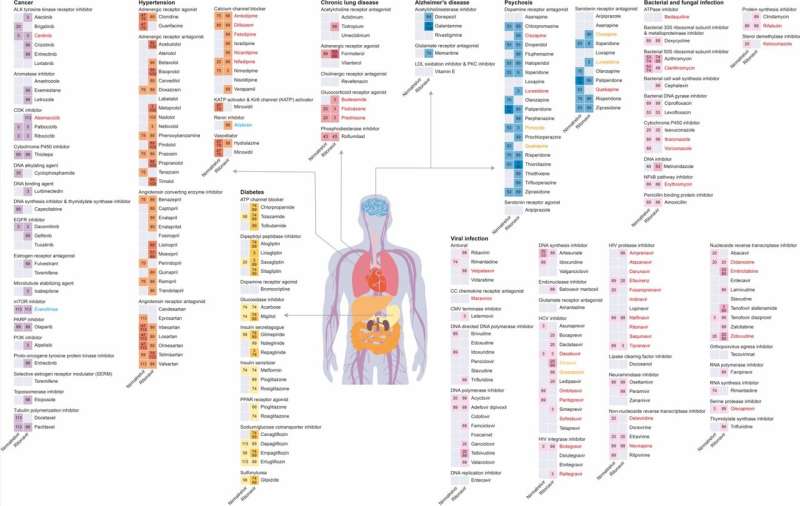This article has been reviewed according to Science X's editorial process and policies. Editors have highlighted the following attributes while ensuring the content's credibility:
fact-checked
peer-reviewed publication
trusted source
proofread
AI-based analysis on drug-drug interactions involving Paxlovid

Professor Sang Yup Lee's research team in KAIST's Department of Biochemical Engineering has developed an advanced AI-based drug interaction prediction technology that analyzed the interaction between Paxlovid ingredients that are used as COVID-19 treatment and other prescription drugs.
This paper was published in the online edition of Proceedings of the National Academy of Sciences.
In this study, the research team developed DeepDDI2, an advanced version of DeepDDI, an AI-based drug interaction prediction model they developed in 2018. DeepDDI2 is able to compute for and process a total of 113 drug-drug interaction (DDI) types, more than the 86 DDI types covered by the existing DeepDDI.
The research team used DeepDDI2 to predict possible interactions between the ingredients (ritonavir, nirmatrelvir) of Paxlovid, a COVID-19 treatment, and other prescription drugs. The research team said that while among COVID-19 patients, high-risk patients with chronic diseases such as high blood pressure and diabetes are likely to be taking other drugs, drug-drug interactions and adverse drug reactions for Paxlovid have not been sufficiently analyzed, yet.
This study was pursued in light of seeing how continued usage of the drug may lead to serious and unwanted complications.
Paxlovid is a COVID-19 treatment developed by Pfizer, an American pharmaceutical company, and received emergency use approval (EUA) from the US Food and Drug Administration (FDA) in December 2021.
The research team used DeepDDI2 to predict how Paxrovid's components, ritonavir and nirmatrelvir, would interact with 2,248 prescription drugs. As a result of the prediction, ritonavir was predicted to interact with 1,403 prescription drugs and nirmatrelvir with 673 drugs.
Using the prediction results, the research team proposed alternative drugs with the same mechanism but low drug interaction potential for prescription drugs with high adverse drug events (ADEs). Accordingly, 124 alternative drugs that could reduce the possible adverse DDI with ritonavir and 239 alternative drugs for nirmatrelvir were identified.
Through this research achievement, it became possible to use deep learning technology to accurately predict drug-drug interactions (DDIs), and this is expected to play an important role in the digital health care, precision medicine and pharmaceutical industries by providing useful information in the process of developing new drugs and making prescriptions.
Professor Sang Yup Lee said, "The results of this study are meaningful at times like when we would have to resort to using drugs that are developed in a hurry in the face of an urgent situations like the COVID-19 pandemic, that it is now possible to identify and take necessary actions against adverse drug reactions caused by drug-drug interactions very quickly."
More information: Computational prediction of interactions between Paxlovid and prescription drugs. Proceedings of the National Academy of Sciences. DOI: 10.1073/pnas.222185712. www.pnas.org/doi/10.1073/pnas.2221857120





















